
Brown cotton ready to harvest.
This year I am on a mission to encourage gardeners to grow textile fibers and take them all the way to clothes to wear. The last post was devoted to flax for linen and this one is about cotton. Not everyone lives in a climate where cotton thrives, but even if it doesn’t actually thrive where you live, you might get a few bolls to play with. I know of someone who grew some cotton in her greenhouse in Northern Ireland in 2016 and harvested 21 grams of fiber. That’s the amount that would fill 3 spindles from my Indian charkha! Not enough for a shirt, of course, but enough to experience what it is like to grow and spin your own cotton. You could buy fiber someone else grew and spin it, adding yours into the mix, and make a garment from that.
You will need full sun for cotton, along with hot weather. Cool nights will diminish your harvest. I generally tell people to plant cotton like they would tomatoes. That means start the seeds about 6 weeks ahead and transplant out around the time of the last spring frost. If you live in a hot climate you may have a long enough growing season to direct sow the seeds, eliminating the need to grow out transplants. The soil temperature about the time of our last spring frost is 60°. Even better for cotton would be a soil temperature of 65°. For a more in-depth look at soil temperatures, I found Development and Growth Monitoring of the Cotton Plant from Texas A&M AgriLife Extension. Good germination depends on warm conditions. You can grow cotton in pots. If you do that and live in a not-so-favorable climate, you could bring the pots inside toward the end of the season.
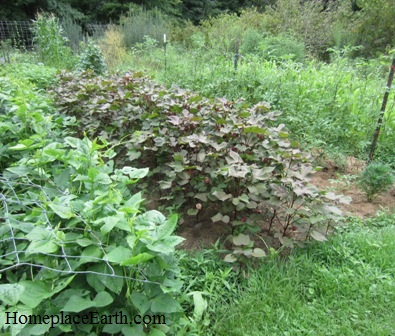
Red Foliated Cotton in the garden–red foliage, white cotton.
When I first grew cotton I purchased seed from Southern Exposure Seed Exchange in Mineral, Virginia. Now I save my own seed to plant back each year. Southern Exposure is local to me and a great company to work with, and I’m not just saying that because they put a photo of me wearing my homegrown, handspun cotton vest in their catalog. The Southern Exposure catalog suggests setting cotton plants 18-30 inches apart in rows 5 feet apart. Cotton requires a good long season—120 days or more, depending on the variety—and it needs every bit of that. I’ve found it usually takes longer for most of the bolls to mature than the days to maturity that are listed for the variety. It all depends on the number of heat units the plants experience over the season. Refer to the Texas A&M article above for more on that. By the time frost hits here there are often bolls that have not opened yet. They can be brought inside and left in a basket to ripen at their own pace into winter. Sometimes I have put those unopened bolls in my solar food dryers and let them pop open there.
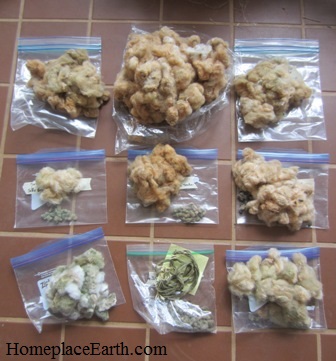
Part of the Cotton Project. All these colors were grown in the same bed in 2016 from seeds of cotton that had grown in a bed I thought would produce green fiber, but had light brown fiber.
I start cotton seeds in my coldframe, as I do everything else, and set the transplants out a few weeks later than the last spring frost date, since the preceding cover crop is usually rye that is cut at pollen shed and left as mulch. I often transplant on 12 inch centers in my 4 foot wide beds. Varieties will cross with each other, so if you want to keep the variety you are planting pure, the best way to do that is to grow only one variety a year. Southern Exposure suggests isolating varieties by ⅛ mile (660 ft.) for home use, and ¼ to ½ mile or more for pure seed. I have experienced the mixing of colors when I grew both green and brown cotton in the same year. Even if it crosses, the harvest is still great cotton to work with. In fact, that’s what made my homegrown vest so interesting. In 2016 I carefully sorted seeds from a previous harvest according to fiber color and if they grew in either the green or the brown bed. Some of my friends and family grow them out. We called it the Cotton Project. I’m working with the harvests now and will be writing about it at some point.
If you live in a cotton growing state you may need to get a permit to grow even a small amount of cotton in your garden. Each year, here in Virginia, I contact the Office of Plant Industry Services of the Virginia Department of Agriculture and Consumer Services (VDACS). If I lived closer to the cotton growing areas of the state I would be required to pay a per-acre fee and VDACS would place a boll weevil trap at my place, to be monitored by an inspector throughout the season. The boll weevil, once a scourge to the cotton industry, has not been seen in Virginia since 1995, nevertheless monitoring for it continues. The boll weevil is still alive in Texas.
I checked information online about Georgia’s Boll Weevil Eradication Program and see that few permits are given for non-commercial cotton, and those involved heritage farms that had educational programs, but you could still inquire what it would take to get a permit for you to grow cotton. States that are part of the Boll Weevil Eradication Program, which is any state with commercial cotton production, would have a policy for non-commercial growers, such as yourself. In my case, all it takes is an email explaining where I am growing cotton again this year for educational purposes and how much area will be in cotton production. I measure the area in square feet, not acres. I receive a waiver by return email, no problem. The program is taken so seriously because the fear of the boll weevil making a comeback is so strong. Boll weevils can move around via our interstate highways as fast as our cars and trucks can carry them as hitchhikers, and could find a safe harbor in your garden if not watched for.
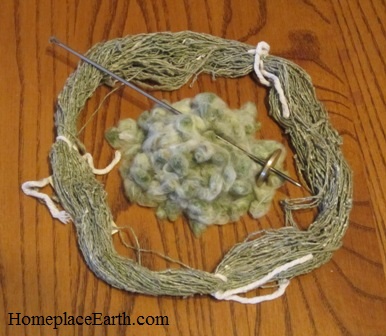
Erlene’s Green cotton. Seeds plus fiber total 1 ounce. Fiber is 25% of weight.
I like to grow cotton so that I can spin it and make clothes—a vest and shirt, so far. It is fascinating to plant a seed, harvest the fiber, and produce thread. I think it should be part of every school garden that has the right climate for it. History can come alive for the students when they harvest the cotton bolls, take out the seeds, and learn to spin. If the students don’t spin it themselves, someone should be on hand to demonstrate that for them with their very own school-grown cotton. Most likely, the cotton that will be harvested in the fall will have been planted by the previous class. The harvesting class will save the seeds from their harvest and plant them out as a gift for the next class. What a great way to live!
Planting for fiber is the easy part; learning what to do with it is another thing altogether. This year I will be leading the way for you with my blog posts about cotton and flax, with directions for what’s next. In fact, since cotton and flax fiber to practice on is available for purchase many places, I hope to have you spinning while you are waiting for your harvest.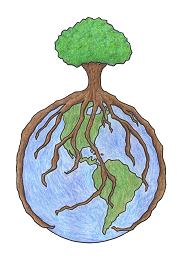
Read Full Post »
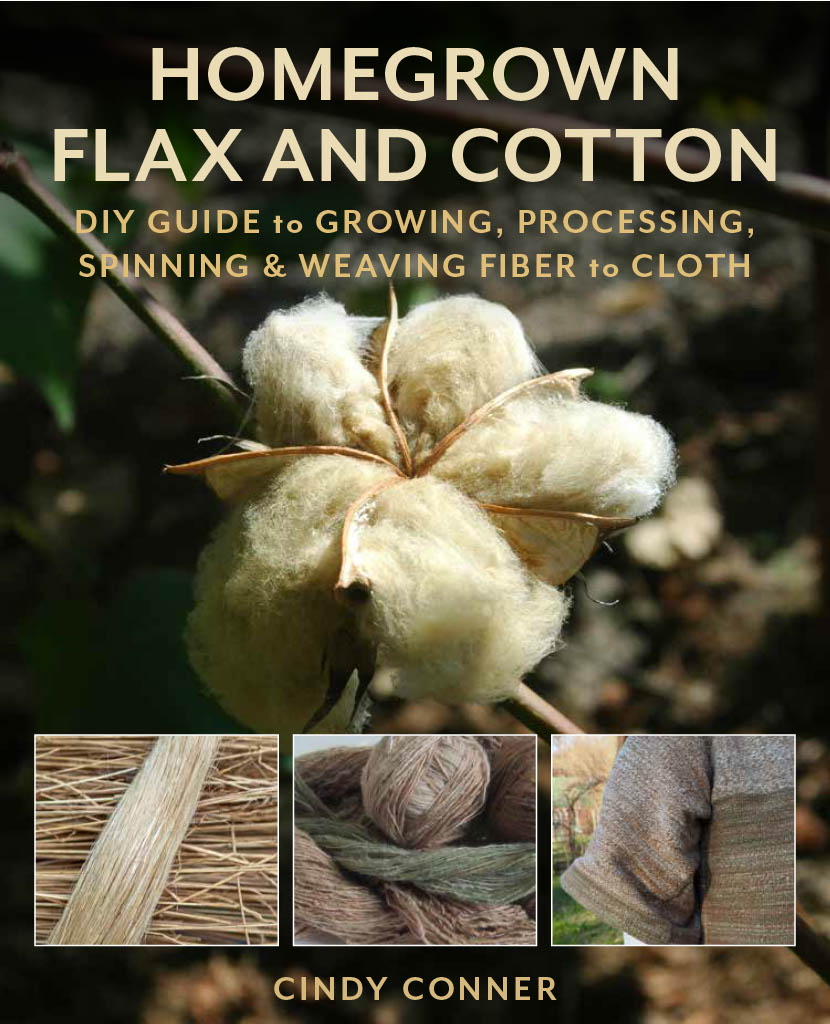
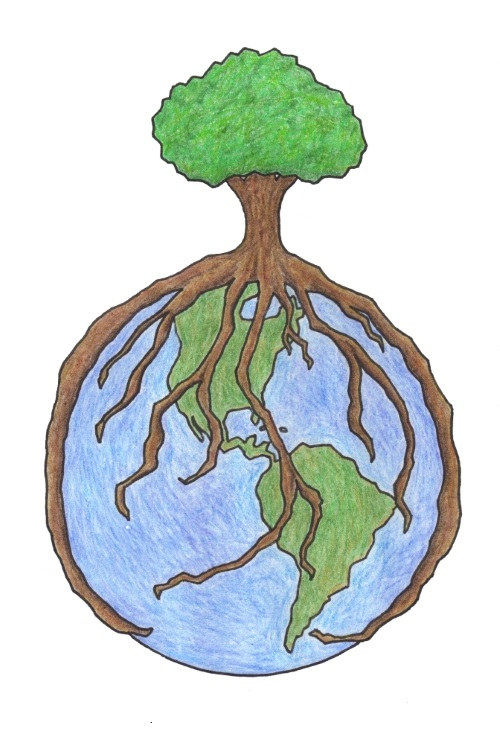
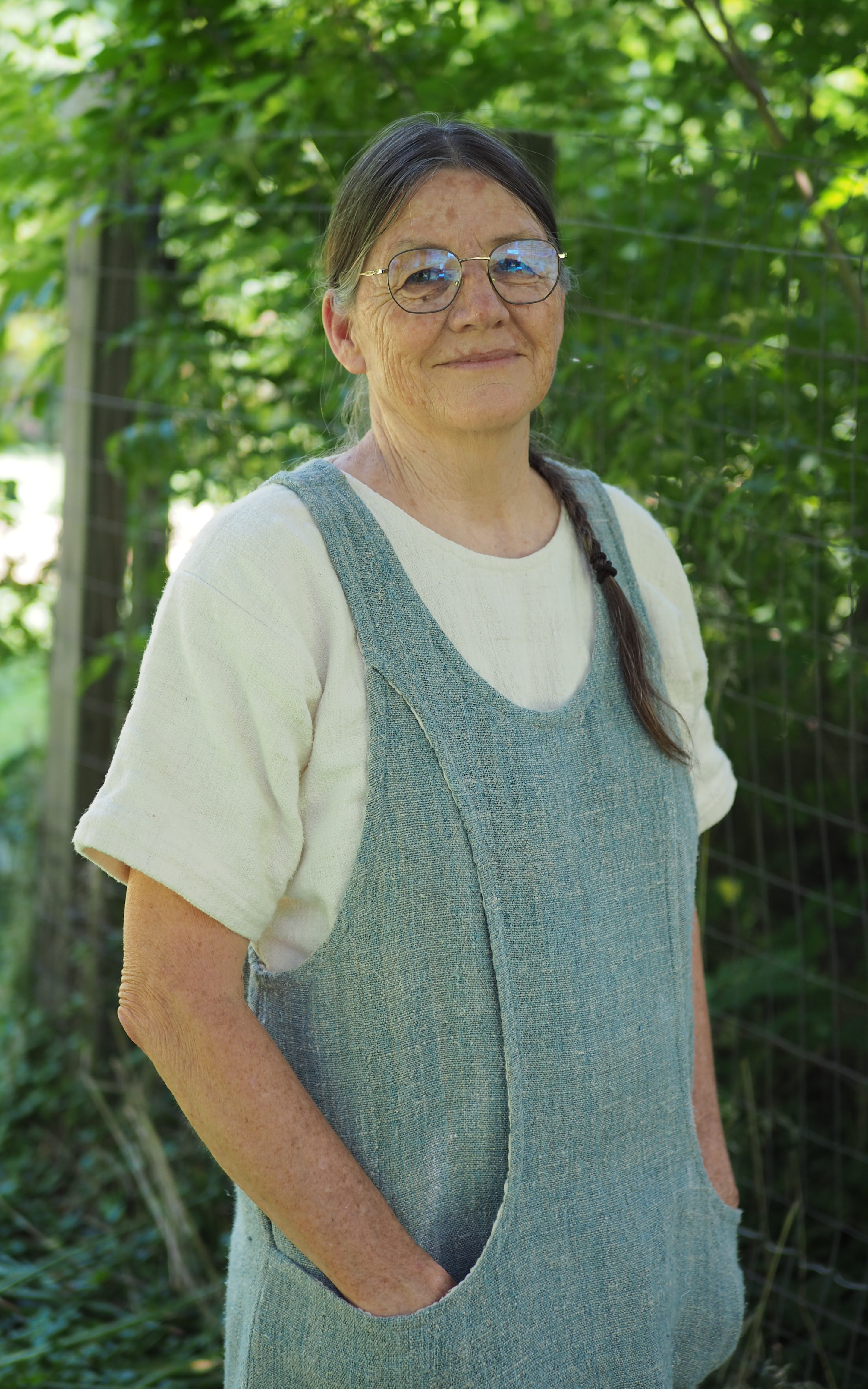
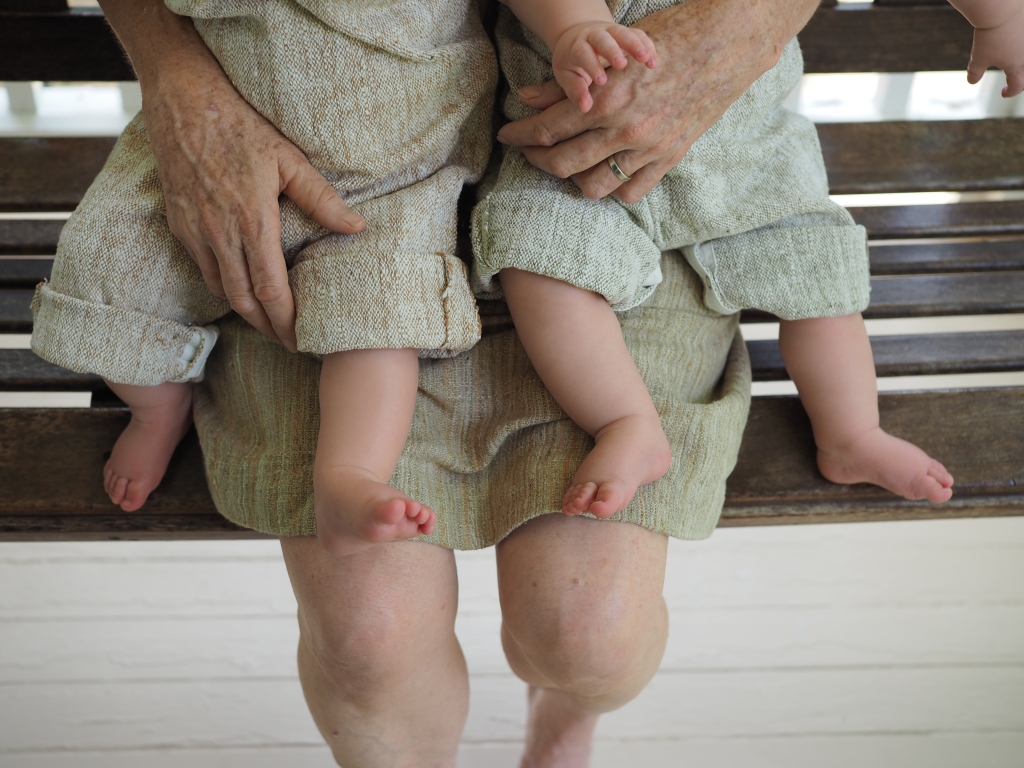



 I have come to the conclusion that the English language is deficient in vocabulary to adequately describe the value of our homegrown/homemade products. Each week my local farmers market devotes a booth space to a nonprofit organization for educational purposes. Recently that space went to
I have come to the conclusion that the English language is deficient in vocabulary to adequately describe the value of our homegrown/homemade products. Each week my local farmers market devotes a booth space to a nonprofit organization for educational purposes. Recently that space went to 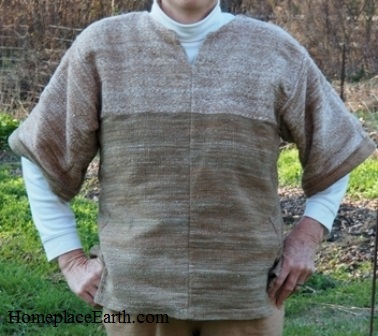 Even though I made it clear that they weren’t for sale, I was repeatedly asked how much money I would take for my vest and shirt if they were for sale. This has happened to me before. These garments are priceless. I will not put a price tag on the cotton I grow and the labor of love involved in bringing these garments to life. Granted, when I grew for the markets I had to put a money value on my vegetables and eggs. I don’t do that now for the food I grow and for anything else I make for my family’s consumption and use and that which I give to friends. It is a relaxing way to be. Market growers need to grow high value crops to make ends meet. However, there are many other great things to grow and to make that wouldn’t bring enough money if you were to sell them, but would greatly enhance your well being.
Even though I made it clear that they weren’t for sale, I was repeatedly asked how much money I would take for my vest and shirt if they were for sale. This has happened to me before. These garments are priceless. I will not put a price tag on the cotton I grow and the labor of love involved in bringing these garments to life. Granted, when I grew for the markets I had to put a money value on my vegetables and eggs. I don’t do that now for the food I grow and for anything else I make for my family’s consumption and use and that which I give to friends. It is a relaxing way to be. Market growers need to grow high value crops to make ends meet. However, there are many other great things to grow and to make that wouldn’t bring enough money if you were to sell them, but would greatly enhance your well being.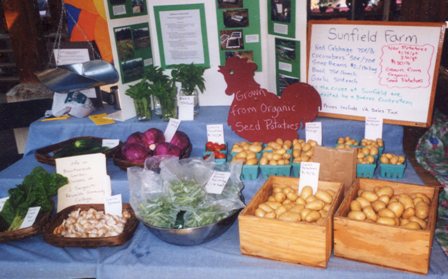
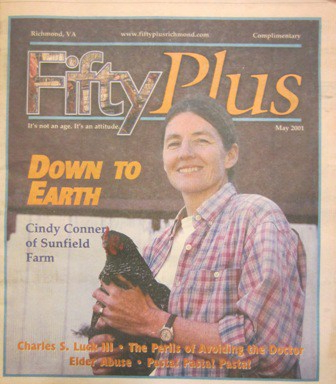 I sold vegetables and eggs from 1992 through the 2001 season. Although I followed good organic practices, I never bothered to get certified organic because I was selling directly to restaurants and families and I told them how I grew things. When we started the Ashland Farmers Market in 1999 I had a photo display that showed my gardens and compost piles. Besides being an educational tool, it gave people a reason to stop, see what I was doing, and ask questions. In 2001 I also sold at the 17th St. Farmers Market in Richmond, VA. Two of the farms at that market were certified organic. A few weeks after the Richmond market opened for the season the monthly publication, Fifty Plus, came out that included an interview with me. I had turned fifty that year and I was on the cover holding a chicken! In the interview I explained how I did things at my farm, working with nature and making compost. The next week a woman came to my booth to shop and said that in the previous weeks she had only bought from the certified organic growers because she thought they were the only ones who had what she valued. After reading about me in Fifty Plus she realized that I was the one she wanted to buy from.
I sold vegetables and eggs from 1992 through the 2001 season. Although I followed good organic practices, I never bothered to get certified organic because I was selling directly to restaurants and families and I told them how I grew things. When we started the Ashland Farmers Market in 1999 I had a photo display that showed my gardens and compost piles. Besides being an educational tool, it gave people a reason to stop, see what I was doing, and ask questions. In 2001 I also sold at the 17th St. Farmers Market in Richmond, VA. Two of the farms at that market were certified organic. A few weeks after the Richmond market opened for the season the monthly publication, Fifty Plus, came out that included an interview with me. I had turned fifty that year and I was on the cover holding a chicken! In the interview I explained how I did things at my farm, working with nature and making compost. The next week a woman came to my booth to shop and said that in the previous weeks she had only bought from the certified organic growers because she thought they were the only ones who had what she valued. After reading about me in Fifty Plus she realized that I was the one she wanted to buy from.








 I have completed another garment with my homegrown cotton! You may recall that I made a
I have completed another garment with my homegrown cotton! You may recall that I made a 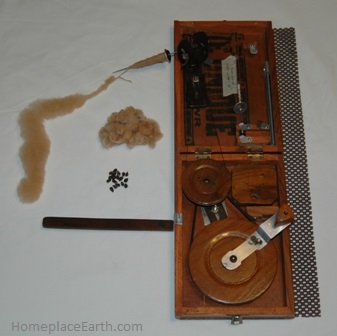
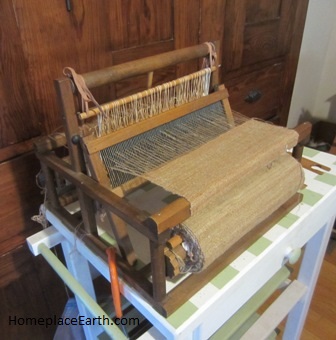
 I wove four full length (30½”) panels for the front and back. The change of color from brown/white to brown/green is woven in, not pieced. The side panel was woven at 22” long. The sleeve panels were woven at 14” (10½” brown/white ply and 3½” brown/green). The hem is 1” plus an additional ⅜” turned in from there. I had to make sure to allow for shrinkage when I determined my measurements for weaving. Shrinkage in the length amounted to about 8%.
I wove four full length (30½”) panels for the front and back. The change of color from brown/white to brown/green is woven in, not pieced. The side panel was woven at 22” long. The sleeve panels were woven at 14” (10½” brown/white ply and 3½” brown/green). The hem is 1” plus an additional ⅜” turned in from there. I had to make sure to allow for shrinkage when I determined my measurements for weaving. Shrinkage in the length amounted to about 8%.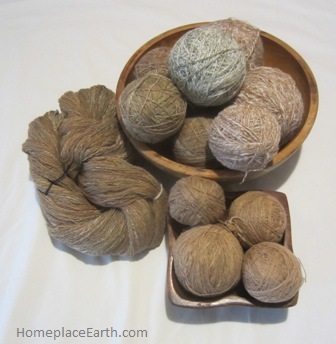

 After being away from this blog since I broke my wrist in March, I’m back! To celebrate my return, I am offering a 25% discount through January 1, 2017 on my cover crop and garden plan DVDs and on my books Grow a Sustainable Diet and Seed Libraries. As always, shipping is free in the US. My DVDs and Grow a Sustainable Diet are educational tools and used in the sustainable agriculture program at Reynolds Community College in Goochland, VA where I used to teach. When I produced them, I had in mind those who couldn’t take my classes in person. So, if you have been wanting to learn more about cover crops, garden planning,
After being away from this blog since I broke my wrist in March, I’m back! To celebrate my return, I am offering a 25% discount through January 1, 2017 on my cover crop and garden plan DVDs and on my books Grow a Sustainable Diet and Seed Libraries. As always, shipping is free in the US. My DVDs and Grow a Sustainable Diet are educational tools and used in the sustainable agriculture program at Reynolds Community College in Goochland, VA where I used to teach. When I produced them, I had in mind those who couldn’t take my classes in person. So, if you have been wanting to learn more about cover crops, garden planning, 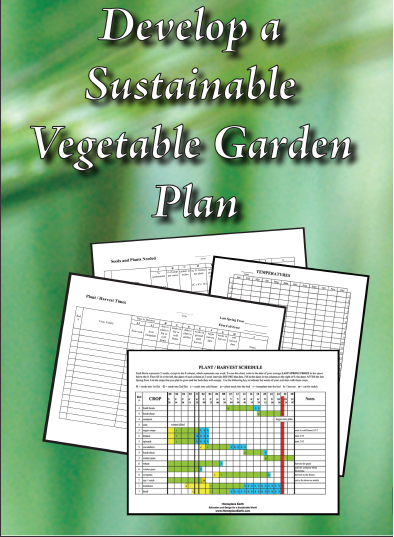 planni
planni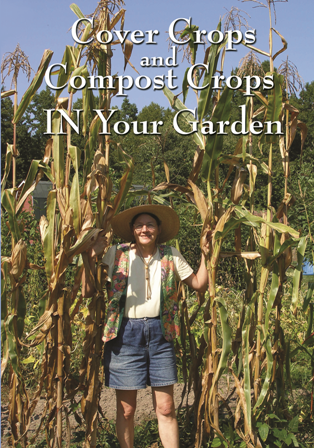 ng your diet around your garden, and planning your permaculture homestead, take advantage of this opportunity to purchase an educational program that will walk you through the process and help you apply your new found information to your own situation. Or, you may have someone on your holiday gift list that would benefit from these materials. You’ll find these sale prices on my website at
ng your diet around your garden, and planning your permaculture homestead, take advantage of this opportunity to purchase an educational program that will walk you through the process and help you apply your new found information to your own situation. Or, you may have someone on your holiday gift list that would benefit from these materials. You’ll find these sale prices on my website at 

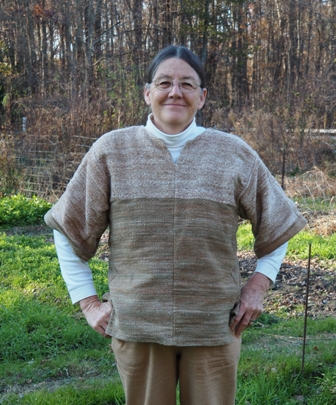 a shirt. Hurray! I’ve used my time away from this blog to read and learn more about the history of textiles. What was once local production fueled the industrial revolution and the exploiting of people and resources has continued ever since to bring us cheap clothes—way too many cheap clothes. When you shop for clothes I would like you to consider how the people who produced them and the earth that provided the raw materials were compensated to bring you such bargains. There is much to talk about on this subject, so stay tuned. I will be telling you all about my new homegrown, handspun, handwoven, naturally-colored cotton shirt in a future post. I will also be sharing my adventures with the flax, rice, Japanese indigo and other natural dyeing, while I continue addressing the many topics you have enjoyed in this blog.
a shirt. Hurray! I’ve used my time away from this blog to read and learn more about the history of textiles. What was once local production fueled the industrial revolution and the exploiting of people and resources has continued ever since to bring us cheap clothes—way too many cheap clothes. When you shop for clothes I would like you to consider how the people who produced them and the earth that provided the raw materials were compensated to bring you such bargains. There is much to talk about on this subject, so stay tuned. I will be telling you all about my new homegrown, handspun, handwoven, naturally-colored cotton shirt in a future post. I will also be sharing my adventures with the flax, rice, Japanese indigo and other natural dyeing, while I continue addressing the many topics you have enjoyed in this blog.



